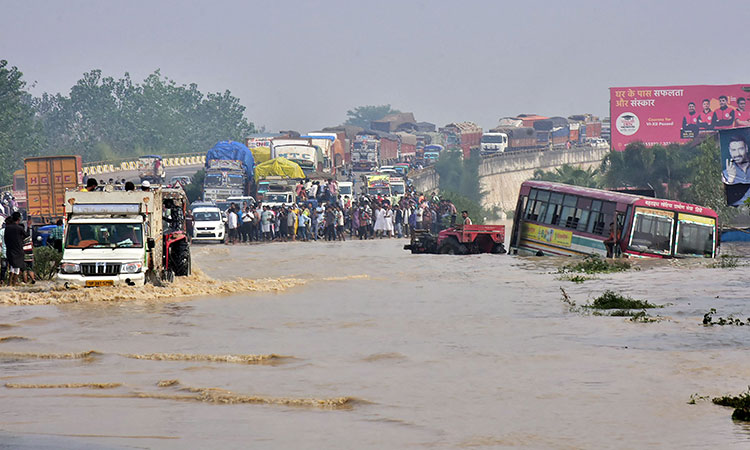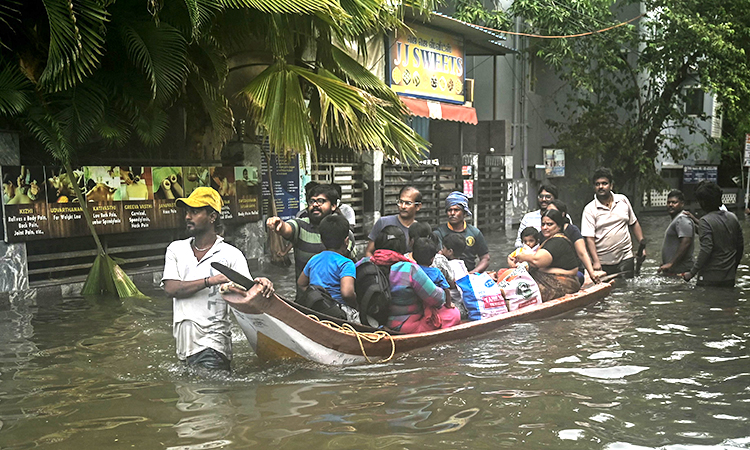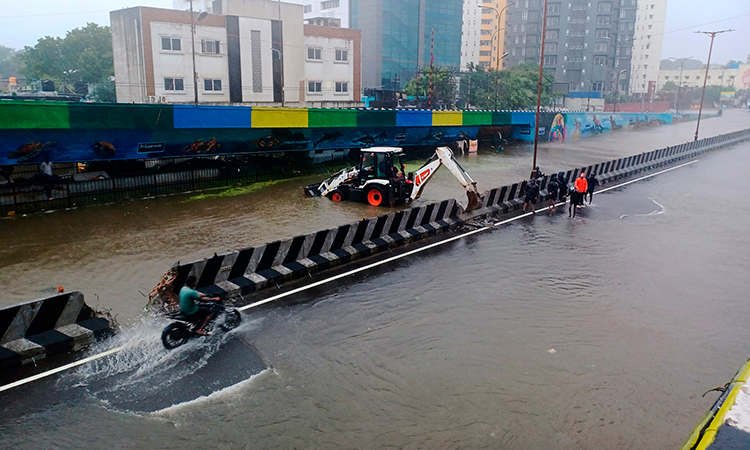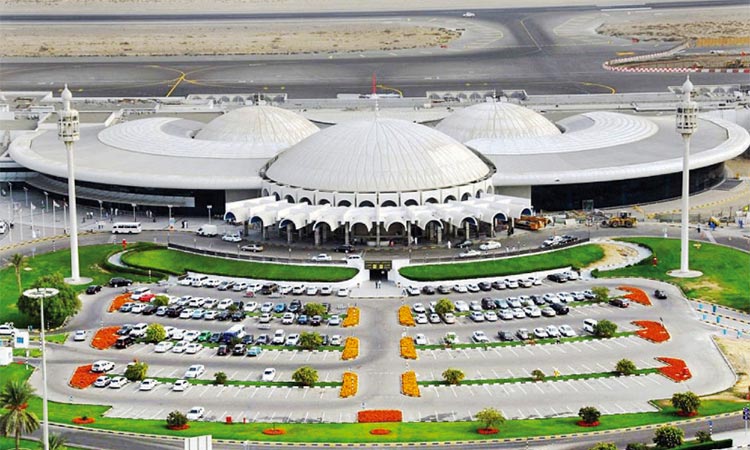Nature’s fury in Assam takes its toll on wildlife
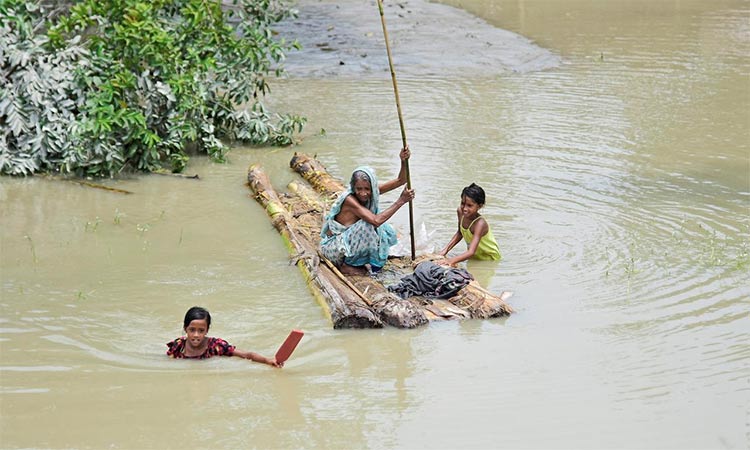
A woman rows a makeshift raft as girls wade through floodwaters in Morigaon district, Assam, India. Reuters
Reports state that more than 5.35 million people are under threat in Assam alone. All major rivers are flowing above danger level. While close to 1,000 houses have been damaged, over 1.6 million animals, including livestock have been affected. The government has pressed the National Disaster Response Force and State Disaster Response Force to help the marooned people in different districts, while the Army has also been called in to assist the civil administration in relief and rescue operations.
Heart-wrenching pictures of exhausted rhinos resting on patches of land at the Kaziranga National Park in the wake of the devastating floods have surfaced on the internet. Rising floodwater levels in the state posed a threat to the wild animals in Kaziranga, which has been entirely under water owing to incessant rains in the region.
In order to escape the flooded Kaziranga, animals were seen trying to cross the busy highway and reach the nearby Karbi hills. But many of them lost their lives in traffic accidents while crossing the highway.
The 430-square kilometre Park is a World Heritage site spread across two districts, Golaghat and Nagaon. It is primarily known for being home to a majority of the world’s great one-horned rhinoceroses, but it is also a tiger reserve, and has large populations of elephants, buffalo and deer.
A video on Twitter shared by Parveen Kaswan of the IFS (Indian Forest Service) shows the plight of these wild animals. His images show deer wading through deep waters in the sanctuary while rhino calves struggled to stay afloat and over 95% of the park is submerged, rendering animals shelterless and forcing them to look for refuge in human habitations
Startling pictures of a Royal Bengal Tiger on a bed at a shop near the Bagori range of the World Heritage Site were widely shared on social media after the Wildlife Trust of India posted it on Twitter.
The fully grown tiger was forced out of its natural habitat due to the rising water levels and was seen relaxing on a bed inside a shop highlighting the plight of animals as the state battles the deluge.
A report in the Economic Times states that according to data available with the Park Directorate, 12 one-horned rhinos, including the one at Haldibari, have died so far. While 11 of them drowned, the twelfth, trying to escape the floodplains, fell to its death after it slipped from the nearby Karbi Anglong hills.
In 2018-19, over176,000 tourists, including 7443 foreigners, visited the park, the main attraction being the rhino. The conservation of rhinos in Kaziranga has been a success story: their numbers have grown from a paltry 366 in 1966 to 2,413 in 2018 when the last census was conducted. The park also has 1,089 elephants, 1,937 wild buffaloes, 907 swamp deer and 104 tigers. It is home to 15 species of mammals that are considered threatened under the Wildlife (Protection) Act, 1972.
About 60% of KNP’s 430 sq. km area is still under water, but flood levels have dropped to 142 cm on Saturday. Large parts of Manas National Park and Pobitora Wildlife Sanctuary are also submerged, forcing wild animals, including rhinos, elephants, deer and wild boars, to take refuge in artificial highlands constructed within the parks or migrate to the southern highlands of Karbi Anglong hills.
Last week the Indian Meteorological Department (IMD) issued a red alert in several districts across Kerala for Saturday amid forecast of extremely heavy rainfall in the area.
In spite of all this, India has received 16% below average rain since the monsoon season began on June 1. Monsoon rains turned patchy over the central, western and southern parts of the country, raising concerns. India typically receives 75% of its annual rain from the June-September monsoon as moisture-laden winds sweep in from the southwest of the peninsula. The IMD defines average, or normal, rainfall as between 96% and 104% of a 50-year average of 89 cm for the entire four-month season beginning June.
